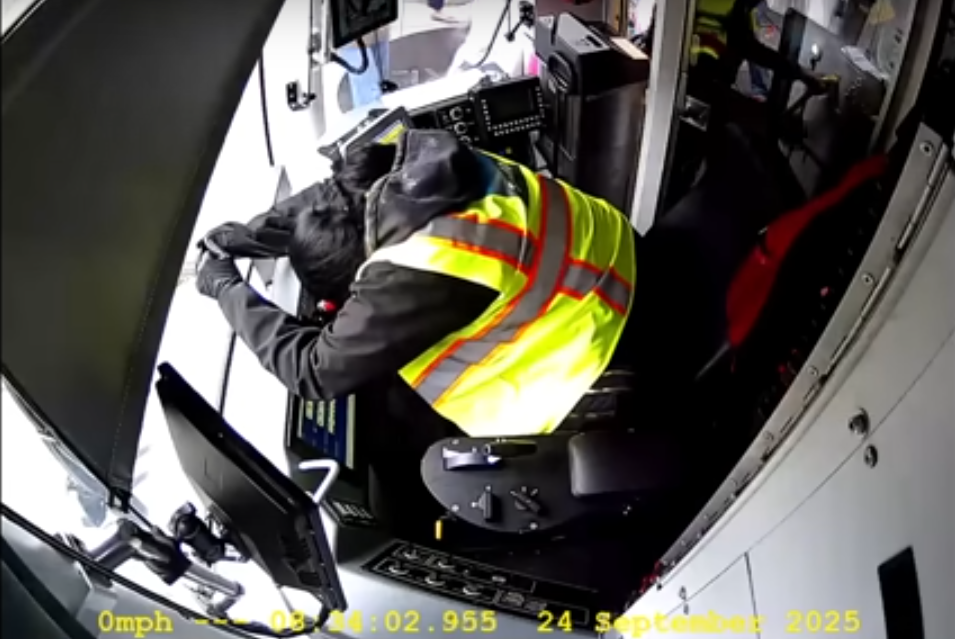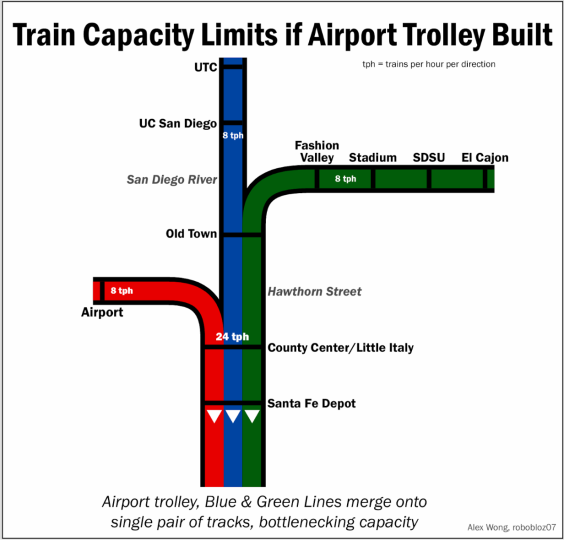 Marlene Tran speaks with MTA Board Vice Chairman Rev. Dr. James McCray, Jr. Photo: Sasanna Yee
Marlene Tran speaks with MTA Board Vice Chairman Rev. Dr. James McCray, Jr. Photo: Sasanna YeeWhen the MTA Board approved wide-ranging changes to Muni service at its meetings this fall, most of the public comment was from residents who didn't want rerouted bus lines to pass by their homes, and merchants who opposed articulated buses running in front of their shops. As Streetsblog's coverage noted at the time, the absence of Muni riders at the meeting was striking, perhaps indicating a lack of proper notice.
At Tuesday's MTA Board meeting, dozens of Chinatown and Visitacion Valley residents showed up to tell the MTA that they had not, in fact, received proper notice about changes to the 9X-Bayshore Express lines that run between their neighborhoods, including renumbering and a several-block rerouting in Visitacion Valley. Most said they only heard about the proposed service changes this week - from an article in the Chinese-language newspaper Sing Tao.
The MTA plans to actually increase service on the 9X lines, which will soon be renamed the 8X, but the gap in their outreach left some advocates wondering: if Muni can't do proper outreach on service changes to the 9X, how does it expect to sell broader initiatives like bus stop consolidation and parking reform?
The MTA conducted extensive outreach in preparation for the December 5th changes, and will distribute a detailed brochure [PDF] on Muni buses this Friday, which outlines the changes in Chinese, English and Spanish. Several of the speakers at Tuesday's meeting questioned the agency's cultural competency, however, charging that most 9X riders were not properly notified about proposed changes to the route and line numbering.
"A group of Chinatown and Visitacion Valley residents is here to protest Muni for your top-down decision regarding our transportation system, because we have not been previously informed or had any direct community input," said Marlene Tran, a spokesperson for the Visitacion Valley Asians Alliance.
"For the Chinatown side, they all feel disrespected by the MTA because they feel like there wasn't enough outreach or engagement for the community to have input in the public process," said Tammy Hung, an organizer with the Community Tenants Association. "In fact, we don't even know if there were any community meetings for any of these route changes."
Signs were posted at bus stops instructing riders to visit the MTA's website for more information on route changes, which many of the 9X's riders don't have access to, said Hung. "I was just told by the MTA that these booklets are only going to be passed out on Friday, and if we're waiting until Friday to notify our public on the changes... I mean, seniors, some of them don't even know how to read Chinese."
Many of the residents were particularly concerned that they weren't notified about the elimination of the 9X bus stop at Rutland Street and Arleta Avenue in Visitacion Valley. That segment of the line will be rerouted along Visitacion Avenue and Bayshore Boulevard.
 Several dozen residents of Chinatown and Visitacion Valley showed up to Tuesday's meeting. Photo: Michael Rhodes
Several dozen residents of Chinatown and Visitacion Valley showed up to Tuesday's meeting. Photo: Michael Rhodes"Residents will have to walk farther to and from the bus stops, which increases the probability of the residents being crime victims, given the high crime rate in the Visitacion Valley neighborhood," said Sasanna Yee, a Visitacion Valley resident. "The City Controller's office recently released statistics [PDF chart] indicating that the 9X and the 9 lines in my neighborhood have the most security incidents. How will MTA address our safety concerns?"
Recently, when the MTA proposed straightening a segment of the 48-Quintara through Potrero Hill to speed up travel times, neighbors showed up to MTA Board meetings to offer refinements, but generally supported the plan. If Visitacion Valley residents had been similarly aware of the plans for the 9X, the MTA and residents might have found a solution that saves travel time while addressing community concerns. Instead, the bus stop consolidation on the 48 and 9X serve as contrasting examples of how Muni should and shouldn't approach outreach on a future citywide effort to consolidate bus stops to speed service.
The MTA Board and staff appeared surprised by the outpouring of concern. Board Chairman Tom Nolan said the extent of staff's outreach and the quality of the route changes brochure had greatly impressed him, but acknowledged that the public participation process was "clearly not perfect."
"When we institute these changes, we will be evaluating it, we will be watching them, to see what kind of effects they have and, if necessary, alter based on the results of what were doing," said Nolan. "We're trying to figure out a way to serve the entire city while being sensitive to various communities and we will definitely keep watching that."
Julie Kirschbaum, the MTA's Transit Effectiveness Project project manger, said she regretted that the agency hadn't done a better job of reaching out to riders from Chinatown and Visitacion Valley. "I am very apologetic because we try as hard as possible to engage with all of our customers," said Kirschbaum. "We really focus on multilingual outreach for that reason."
"The proposal to run two-way on Visitacion was first introduced during the Transit Effectiveness Project, and at those community meetings we've had very heavy participation by monolingual speakers," she said. "At the time, we were looking at a whole series of changes and it may be that this one specific route issue was overlooked."
Kirschbaum added that she hoped to emphasize that 9X riders will actually see an increase in bus service on December 5th. "One of the things we're most proud of in these changes is that we're increasing service on the 9X, soon to be 8X, routes," said Kirschbaum. "We'll have 25 percent more service than we do today. So, even in a time of service reductions, we are fortunate to be able to address the heavy crowding that we're experiencing on this route. So, while some of our customers may have to walk farther, there will be shorter wait times, and they will have more space on the vehicles."
For many of the residents who spoke, it wasn't so much the specific service changes, but the gap in public outreach that concerned them.
"Fair transit is a fundamental social justice matter, and the community wants to be included in the decision-making process," said Wing Hoo Leung, vice present of the Community Tenants Association, speaking through a translator. "We demand respect from MTA."





